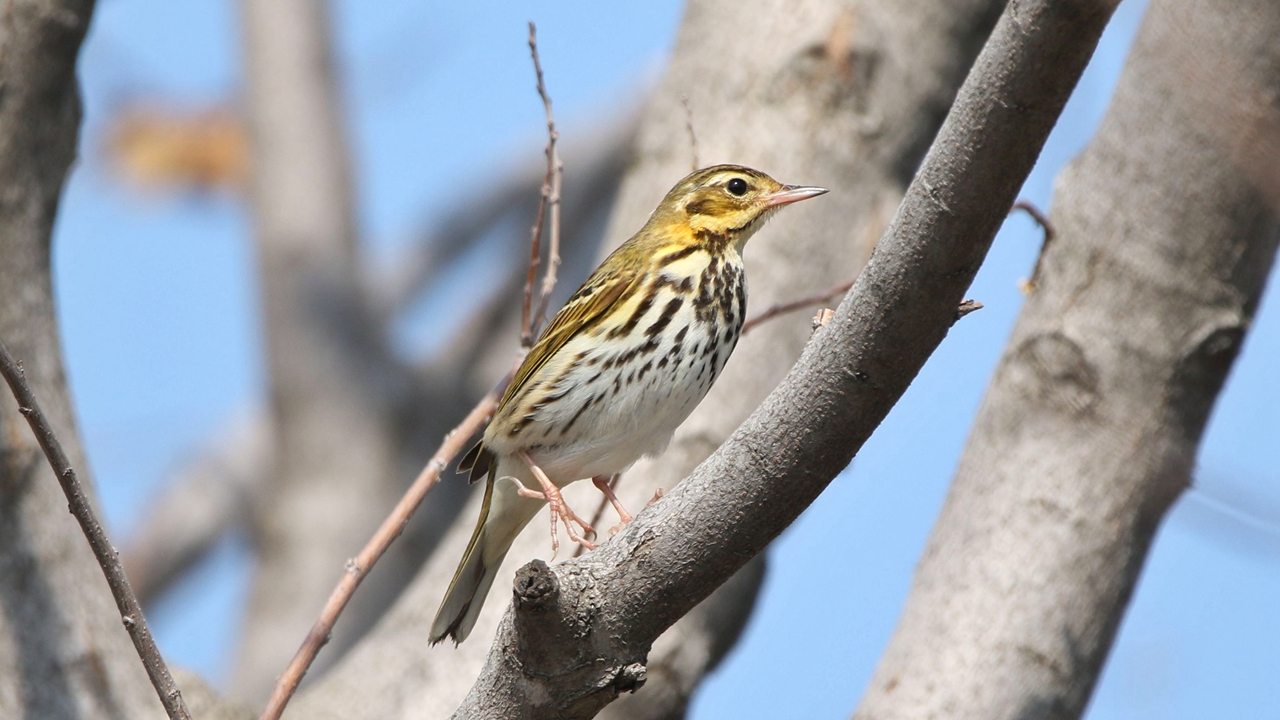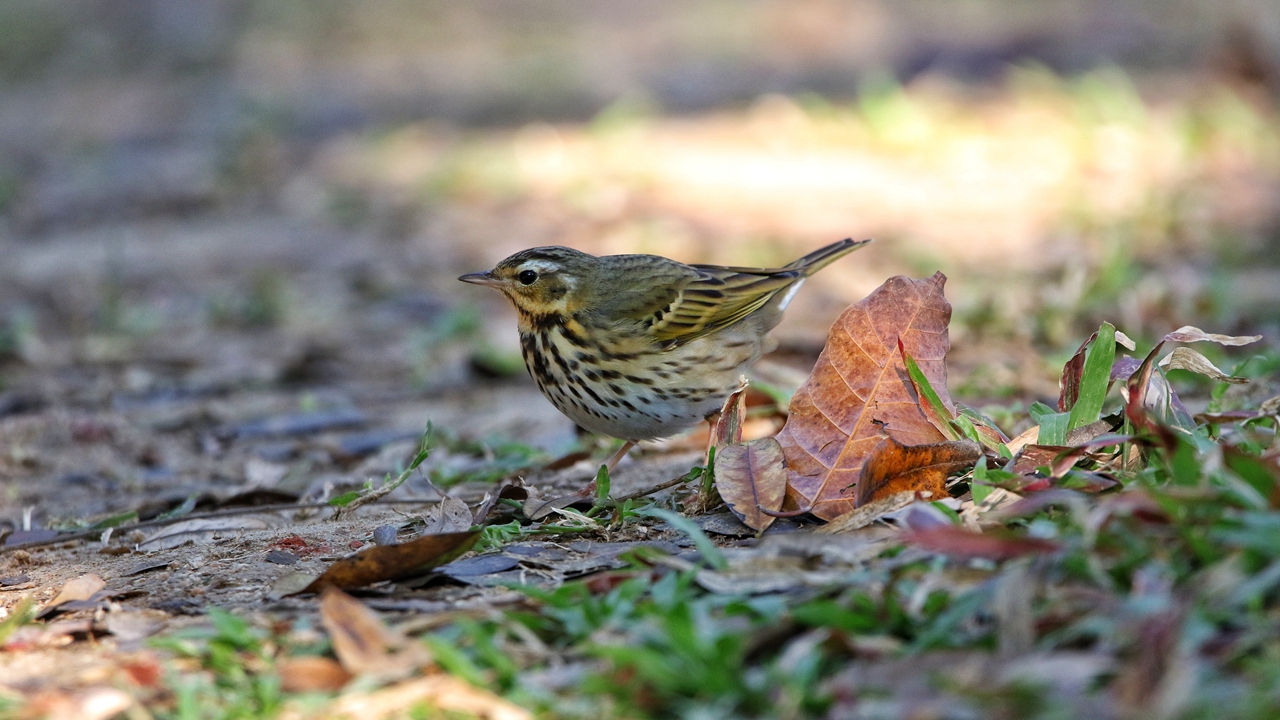The olive-backed pipit
Writer: Isaac Cohen | Editor: Zhang Chanwen | From: Shenzhen Daily

An Olive-backed Pipit is seen in a tree at the Lianhua Hill Park in Futian. Photos by Isaac Cohen
The Olive-backed Pipit
The olive-backed pipit (Anthus hodgsoni) is a small passerine bird of about 15 centimeters in length. This charming species, known for its melodious song and remarkable adaptability, can be found in various habitats across Asia, particularly in the Himalayan region, and for our joy, also in Shenzhen’s parks.
树鹨是一种体长15厘米左右的小型雀形类鸟类,它们鸣声独特,适应能力强,广泛分布于亚洲尤其是喜马拉雅山脉周边区域,也是深圳的常见冬候鸟。
This fascinating bird displays a subtle yet distinct plumage, with olive-brown upperparts and a creamy-white underbelly streaked with dark brown. Its small beak is ideally suited for foraging on the ground, and its long, slender legs enable it to navigate through its habitat with agility.
树鹨的羽色不鲜艳,但也不难辨识:上体橄榄绿色,腹奶油色,具深棕色纵斑;喙细长,适合在地面觅食;腿部纤细有力,擅奔走。

An Olive-backed Pipit is seen in a tree at the Lianhua Hill Park in Futian.
Olive-backed pipits are primarily terrestrial birds, often observed on the ground hopping and running across the forest floor, using their slender beaks to probe the soil and leaf litter in search of food as they forage for insects, spiders, and other small invertebrates. They possess a distinctive habit of wagging their tails while on the ground, which aids in their identification. These pipits are known for their beautiful, high-pitched songs, which they produce during the breeding season. Their melodious calls can be heard cascading through the forests, adding a touch of enchantment to their habitat.
树鹨的领地意识较强,常在特定区域的林下落叶层活动,用喙挖掘土壤、翻找落叶,捕食昆虫、蜘蛛等无脊椎动物。行走时,常有节奏地上下摆动尾部,在野外容易辨识。鸣声高亢悦耳,雄性在繁殖期的求偶叫声婉转多变,响彻整座山林。
During the breeding season, typically from April to June, male Olive-backed Pipits become highly vocal as they establish and defend their territories. They perform captivating aerial displays, accompanied by their melodious songs, to attract females. Once a pair is formed, the male continues to sing to reinforce their bond.
树鹨的繁殖期一般在4月到6月。此时雄性的领地意识膨胀,常驱赶同类,同时展现出鸣唱、舞蹈等明显的求偶行为,得到雌性回应后,雄性往往会更卖力地鸣唱以证明二者已经结为“伉俪”。
The female builds a cup-shaped nest using grass, leaves, and other plant materials; she then lays a clutch of up to five eggs, which she incubates for approximately two weeks. Both parents are responsible for feeding and caring for the chicks once they hatch, ensuring their survival and development until they fledge and become independent.
交配后,雌鸟会寻找草叶、树叶及其他植物性材料搭建杯状巢。每窝产卵可达5枚,孵化约两周后,雏鸟破壳,由亲鸟轮流照料一段时间后,方长齐羽毛,学会飞行,具备离巢独立生活的能力。
The olive-backed pipit plays a vital role in its ecosystem. As insectivorous birds, they help control populations of insects and other invertebrates, contributing to the balance of the ecosystem. Additionally, their foraging behavior on the ground helps to aerate the soil and disperse seeds, inadvertently aiding in the germination and growth of plants.
树鹨在维系生态平衡中扮演着重要角色:因为属食虫鸟,它们调控了生境中昆虫及其他无脊椎动物的数量,防止了物种的泛滥,同时,本物种在地面觅食的习性有助于疏松土壤,传播种子,无形中促进了植物种群的扩散。
Let’s keep working hard to protect our natural areas so we can enjoy these beautiful birds in our city for generations.
我们要继续保护好身边的自然环境,让这些小鸟邻居继续城市里安居乐业,与我们长久相伴。